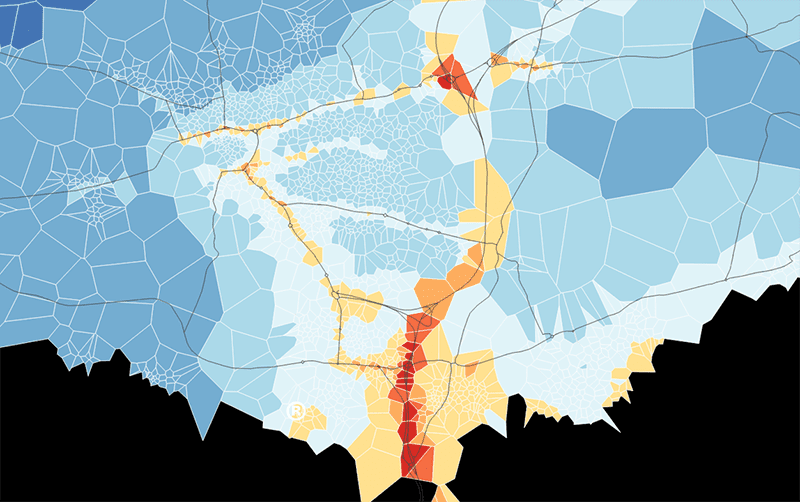
New software can calculate air quality in major cities in under 10 minutes, and within five metres of any given location.
Air pollution monitors are stationed in cities and towns across the UK, but monitors only report pollution once it has happened, with no ability to predict when air quality might change. Also, they only monitor a specific location, while air quality can vary substantially over small areas.
Dr Nicola Masey, an air quality consultant based in Ricardo Energy and Environment’s Glasgow office, reported that Ricardo’s RapidAir system can accurately model air quality in large cities like London in minutes, at five-metre intervals and using a standard office computer.
Masey, whose research was part-funded by the Natural Environment Research Council (NERC), took historic pollution records from 86 sites across London and compared them to RapidAir’s estimates. The model had corresponding results.
Masey said: “We want to build on the air quality monitoring systems that are in place across the UK, particularly in large cities, and enhance the information available to the public and policymakers.
“The usefulness of monitoring has been limited by the fact that it only measures air quality in specific spots, when air quality can change dramatically in just a few metres. In streets surrounded by tall buildings, for example, air pollution can become trapped, especially if the wind is blowing from a direction perpendicular to the street.
“Ricardo developed the RapidAir model to improve the spatial resolution of pollution estimations and, while we measured nitrogen oxide in our study, we can run the system for any pollutants for which emissions are known.
The research, which ran in parallel to the development of the RapidAir model by Ricardo investigated the use of well-known mathematical equations to describe street canyon concentrations. These were compared with concentrations estimated with empirical methods, which were built using geomorphological analysis tools that estimate how densely ‘built-up’ an area is.
For example, sky view factor, hill shade and wind effect are all used by urban designers to assess thermal comfort and solar shading, but these metrics are not commonly used in air pollution studies.
Dr Scott Hamilton, technical lead in air quality modelling from Ricardo Energy and Environment said: “RapidAir is a cost-effective, city-scale dispersion model which retains the best features and functionality of conventional air quality modelling tools, but with the benefit of fast operation and simplicity. We built the system to help us deliver projects around the world but we were keen to have independent help with the validation of the model.
“As well as giving policymakers a detailed, city-wide air quality climate in minutes, RapidAir runs ‘what if’ scenarios to determine the impact of policies or infrastructure changes such as new roads or priority bus routes.
“The system relies on air quality data that is generally already available, so it can be used in any city in any part of the world, as long as there is local measurement data, details of traffic flows and compositions and building data available for us to use with the model.”
Nicola’s research was part-funded by a NERC CASE studentship, a research collaboration between academic and non-academic partner organisations, whether businesses like Ricardo, or third sector organisations.
Robyn Thomas, NERC Associate Director, Operations and Research Careers, said: “Air pollution is a pressing issue in the UK and internationally. We fund high-quality scientific research and innovation to advance our understanding of the sources and impacts of poor air quality, including funding researchers working with industry, business and Government.
“As part of her NERC CASE studentship, Dr Masey’s work with Ricardo will help cities and people plan their air pollution exposure to minimize risks to health.”
The report was published in Environmental Modelling and Software, and can be accessed here: https://www.sciencedirect.com/science/article/pii/S1364815217307806?via%3Dihub






